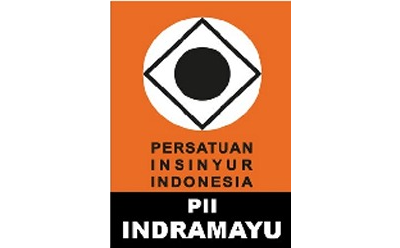LINE CROSSING DETECTOR SYSTEM PADA REAL-TIME SITUATIONAL AWARENESS DENGAN MENGGUNAKAN SPATIAL SAMPLE DIFFERENCE CONSENSUS
Abstract
Pengawasan melalui CCTV merupakan salah satu antisipasi ancaman pada VIP dan atau VVIP. Namun pengawasan menggunakan CCTV ini memungkinkan luputnya pengawasan CCTV oleh aparatur. CCTV hanya mampu merekam, namun tidak memiliki kemampuan real-time situational awareness. Line crossing detector merupakan salah satu produk real-time situational awareness yang mampu memantau suatu key area atau area tertentu yang telah ditentukan sebagai area pengawasan (clear area). Sistem line crossing detector ini hanya akan diimplementasikan di dalam ruangan (indoor area). Secara khusus sistem ini dapat bekerja secara optimal pada tempat yang tidak padat aktivitas. Sistem line crossing detector menggunakan Spatial Sample Difference Consensus (SSDC) untuk mendeteksi adanya objek bergerak. Selain itu, Line Crossing Detector memiliki kemampuan untuk melakukan proses object tracking menggunakan centroid tracking dan mengidentifikasi objek yang masuk ke dalam area pengawasan menggunakan model YOLO V3. Melalui metode student t, sistem mampu mendeteksi objek yang melewati garis pengawasan dengan tingkat kepercayaan 90% dengan tingkat signifikansi 10%.
Full Text:
PDFReferences
Bakliwal, A. et al. (2020) “Crowd Counter: an Application of Centroid Tracking Algorithm,” (04), pp. 1138–1141.
Challa, S. et al. (2011) Fundamentals of object tracking, Fundamentals of Object Tracking. doi:10.1017/CBO9780511975837.
Hidayatullah, P. (2017) Pengolahan Citra Digital Teori dan Aplikasi Nyata. Penerbit Informatika.
Jiang, X. et al. (2019) Deep learning in object detection and recognition, Deep Learning in Object Detection and Recognition. doi:10.1007/978-981-10-5152-4.
Larman, C. (2004) Applying UML and Patterns, Development. doi:10.1016/j.nec.2006.05.008.
Li, J. et al. (2019) “Application research of improved YOLO V3 algorithm in PCB electronic component detection,” Applied Sciences (Switzerland), 9(18). doi:10.3390/app9183750.
Liu, J. and Wang, X. (2020) “Tomato Diseases and Pests Detection Based on Improved Yolo V3 Convolutional Neural Network,” Frontiers in Plant Science, 11(June), pp. 1–12. doi:10.3389/fpls.2020.00898.
Manajang, D., Dompie, S. and Jacobus, A. (2020) “Implementasi Framework Tensorflow Object Detection Dalam Mengklasifikasi Jenis Kendaraan Bermotor,” Jurnal Teknik Informatika, 15(3), pp. 171–178.
Masurekar, O. et al. (2020) “Real Time Object Detection Using YOLOv3,” International Research Journal of Engineering and Technology (IRJET), 07(03), pp. 3764–3768. Available at: www.irjet.net.
Mike (2018) What Object Categories/Labels Are In COCO Dataset? Available at: https://tech.amikelive.com/node-718/what-object-categories-labels-are-in-coco-dataset/ (Accessed: July 30, 2021).
Peters, J.F. (2017) Foundations of Computer Vision. 1st edn. Edited by J. Kacprzyk and L.C. Jain. Switzerland: Springer International Publishing Switzerland. doi:10.1007/978-3-319-52483-2.
Pressman, Roger.S. and Maxim, Bruce.R. (2015) Software engineering: A practitioner’s approach. 8th edn, Advances in Engineering Software (1978). 8th edn. New York: Mc Graw Hill.
Punn, N.S. et al. (2020) “Monitoring COVID-19 social distancing with person detection and tracking via fine-tuned YOLO v3 and Deepsort techniques,” pp. 1–10. Available at: http://arxiv.org/abs/2005.01385.
Zeyi, Z., & Gang, L. (2021). Target motion detection algorithm based on dynamic threshold. Journal of Physics: Conference Series, 1738(1). https://doi.org/10.1088/1742-6596/1738/1/012085
Zhang, C. et al. (2017) “Moving object detection algorithm based on pixel spatial sample difference consensus,” Multimedia Tools and Applications, 76(21), pp. 22077–22093. doi:10.1007/s11042-017-4802-y.
DOI: https://doi.org/10.31884/jtt.v8i1.359
Refbacks
- There are currently no refbacks.
Copyright (c) 2022 JTT (Jurnal Teknologi Terapan)

This work is licensed under a Creative Commons Attribution-NonCommercial-NoDerivatives 4.0 International License.
 Creative Common Attribution-ShareAlike 4.0 International (CC BY-SA 4.0)
Creative Common Attribution-ShareAlike 4.0 International (CC BY-SA 4.0)













